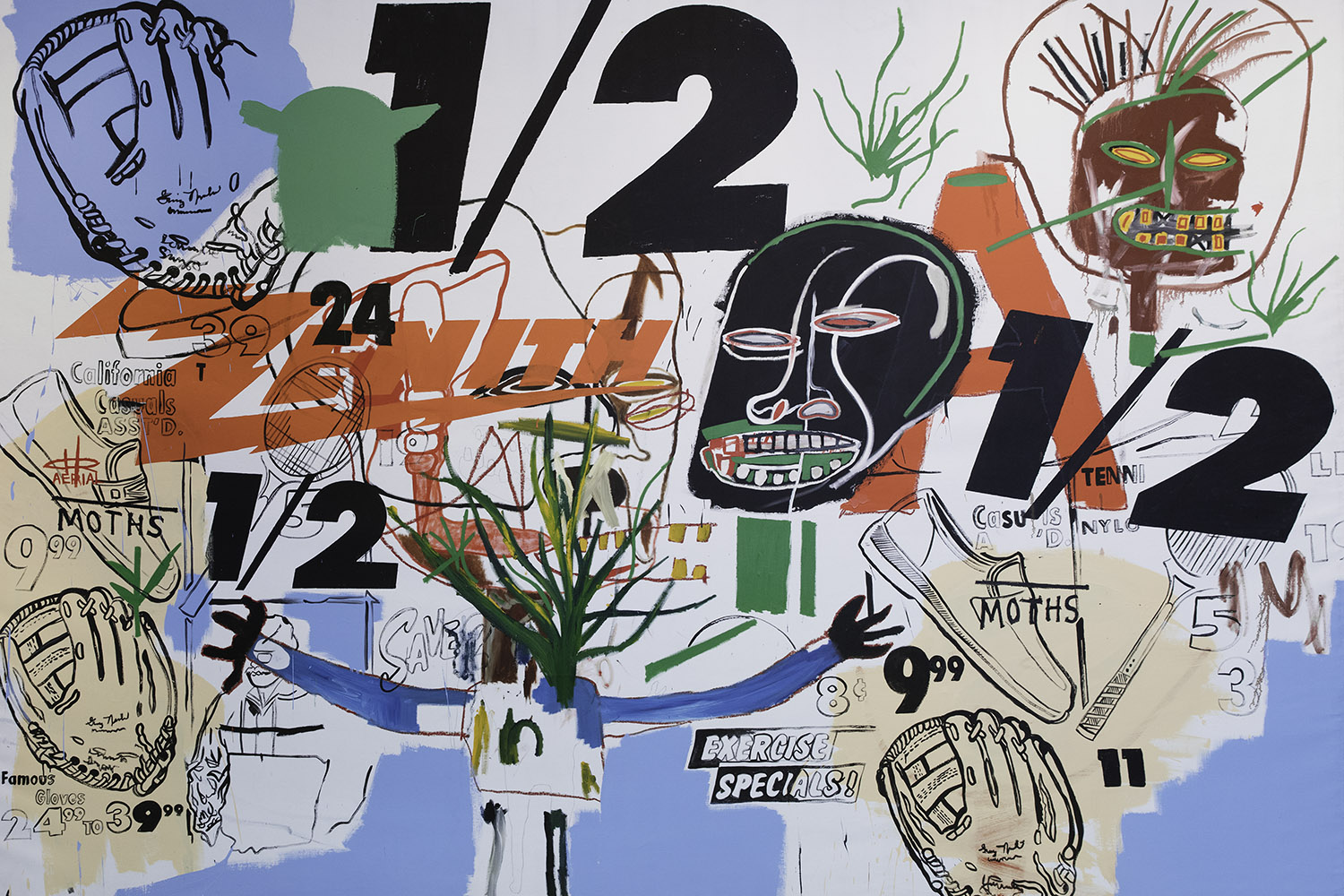
«Basquiat x Warhol. Painting four hands»
Photographer: Michael Halsband,: Andy Warhol and Jean-Michel Basquiat #143 New York City, July 10, 1985
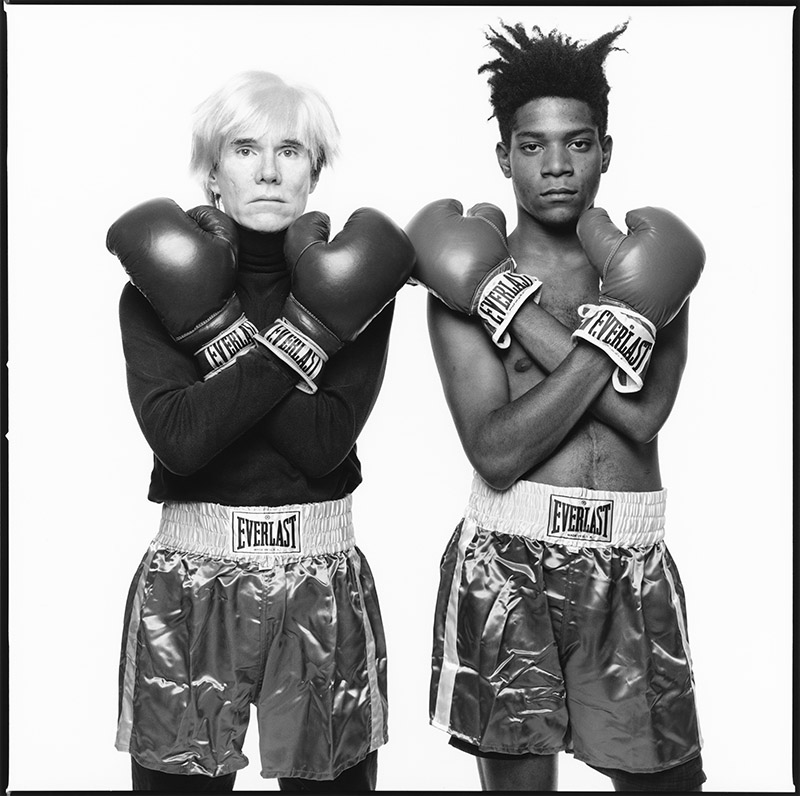
Explosion of color and energy.
1985, Basquiat said that he had created “a million paintings” in collaboration with Andy Warhol. He was referring to one of the most important artistic collaborations in art history, carried out by two of the twentieth century’s most important and influential artists.
The Foundation Louis Vuitton invite us into an art conversation.
In 2018, the Fondation Louis Vuitton featured the Basquiat x Warhol, Painting Four Hands exhibition. In 2023, from April 5 to August 28, the Fondation continue its exploration of the work of Jean- Michel Basquiat, revealing, this time, his collaboration with Andy Warhol. “Basquiat x Warhol. Painting 4 Hands” will be the most important exhibition ever dedicated to this extraordinary body of work.
Between 1984 and 1985, Jean-Michel Basquiat (1960-1988) and Andy Warhol (1928-1987) created around 160 paintings together in tandem, “à quatre mains”, including some of the largest works produced during their respective careers. Now, the exhibition will bring together more than 80 paintings jointly signed by the two artists.

The exhibition includes a number of works by Francesco Clemente, who was also part of the adventure at the beginning.
When Basquiat, Warhol, and Clemente began their joint works, three very different artists encountered one another with profiles, interests, and themes that were already quite clearly defined. Each of the artists began with four paintings and a drawing that were then delivered to one of the other two artists. Similar to Basquiat’s modifications of Warhol’s small silkscreen paintings, each of the three reacted to what had already been drawn, painted, or silkscreened by the other, modifying whatever was there. Due to the highly different artistic styles, the respective artistic contributions can be clearly distinguished from one another.
Andy Warhol, Francesco Clemente, and Jean-Michel Basquiat, Premonition, 1984
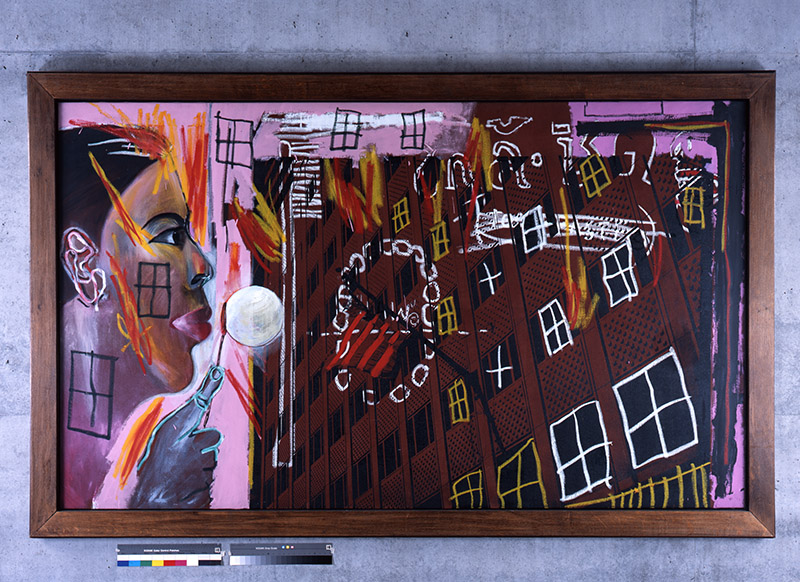
Also featured will be individual works by each as well as a set of works by other major artists (Keith Haring, Jenny Holzer, Kenny Scharf…) in order to evoke the energy of the New York downtown art scene of the 1980s.
Basquiat admired Warhol as an elder, a key art world personality, and the pioneer of a new language and of a groundbreaking relationship to pop culture. Warhol, in turn, found in Basquiat a renewed interest in painting.
“Andy would start one (painting) and put something very recognizable on it, or a product logo, and I would sort of deface it. Then I would try to get him to work some more on it, I would try to get him to do at least two things” explained Basquiat. “I drew it first and then I painted it like Jean-Michel. I think those paintings we’re doing together are better when you can’t tell who did which parts” noted Warhol who expressed his admiration for the younger artist’s virtuosity and freedom
Jean-Michel Basquiat, Andy Warhol, Chair, 1985

At the Factory in the 1960s, Warhol would have several records playing simultaneously, welcoming people day and night amidst paintings, concerts, and film screenings.
In the early 1980s, Basquiat’s studio was continually buzzing with energy. The stereo blared and the television was never off as the painter listened, drew, and created.
Warhol had made popular culture into a raw material, bringing down the barriers between “high” and “low” culture.
Jean- Michel Basquiat and Andy Warhol- 6,99, 1984
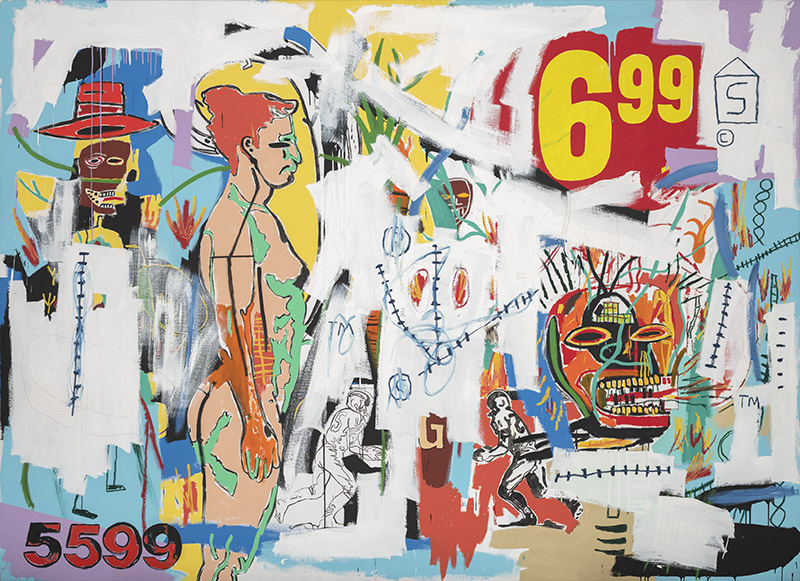
While working with Basquiat, Warhol stopped hiding behind the screen of his silkscreens. He once again picked up his brush to paint logos and newspaper headlines free of any pretense. Basquiat then found himself in front of immense formats, as if facing a wall. Called to action, he worked swiftly. He often extended the lines traced by his elder to let new forms emerge. He sometimes completely subverted the overall balance, amending the canvas with a wide swath of color to provoke his partner and incite him to respond.
Basquiat’s critical and targeted rage, raw and direct, and Warhol’s enigma and ambiguity, an aesthetics of distance, even indifference, not devoid of irony. In common, though, is a world of tragedies where police violence and racism intersect with mass consumerism, popular culture, and pop imagery. This will serve as the basis of the dialogue between the two artists.
Andy Warhol was often the first to intervene on the primed canvas. He would start with a drawing or a silkscreen that would establish the concept through titles and logos as well as define the scale and the frame. Then came Jean-Michel Basquiat’s collages, paintings, and photocopies.
Jean-Michel Basquiat, Andy Warhol- Arm and Hammer II, 1985

Two generations on their respective paths, two artists at different stages of their careers: the “Radiant Child” of the 1980s, at the height of his dizzying ascent, while Warhol’s trajectory was now less dazzling, tarnished by the excess of his commercial portrait production, and despite the sinister nature of the Shadows, it needed to be revived.
Warhol rediscovered his love for brushwork while for Basquiat, the use of silkscreen enhanced his distinct polyphonic art.
In an interview with Becky Johnston and Tamra Davis, Basquiat described their collaboration: “He would start most of the paintings. He would put something very concrete or recognizable, like a newspaper headline or a product logo, and then I would sort of deface it, and then I would try to get him to work some more on it, and then I would work more on it. I would try to get him to do at least two things, you know? [laughing] He likes to do just one hit and then have me do all the work after that.”
Jean-Michel Basquiat, Andy Warhol- Collaboration No. 19, 1984-1985
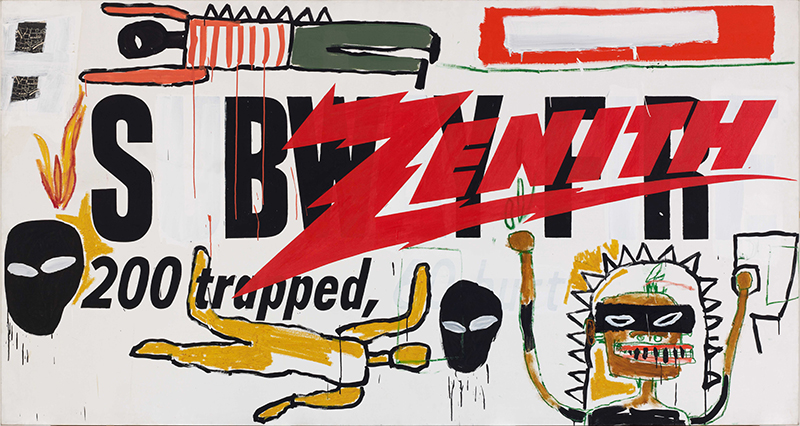
Warhol and Basquiat’s collaborations were “physical conversations” in the sense of dialogues and physical confrontations and demanded a great deal of mutual respect and acceptance. They also always embodied an aggressive encounter between two very different views of art and the world.
As their collaboration gradually came to an end, the two artists remained friends, although the intensity of their relationship decreased. Warhol’s death on February 22, 1987 due to complications during a gall-bladder operation hit Basquiat very hard. He created the three-part assemblage Gravestone as a monument to Warhol that both cites Warhol’s yellow crosses from the work Crosses from 1981/82 and his motif of the skull-like head that he seems to try to erase with gestural brushstrokes. The oversized black tulip and the word “perishable” written twice in all caps on the middle panel of the triptych affirm the subject of death and fugacity. The following year, Basquiat died surprisingly on August 12.
Warhol and Basquiat self portrait Polaroid
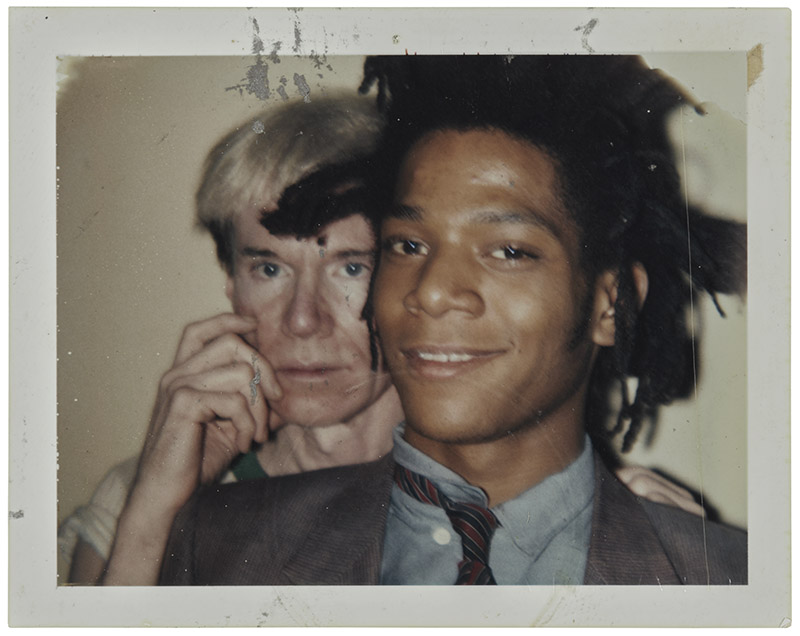
The exhibition “Basquiat x Warhol. Painting 4 Hands”has been possible thanks to:
Bernard Arnault, President of the Fondation Louis Vuitton
Dieter Buchhart, guest curator
Suzanne Pagé, artistic director of the Fondation Louis Vuitton,
Olivier Michelon, curator at the Fondation Louis Vuitton
Bruno Bischofberger, Special Advisor for the exhibition
The text contained herein an adaptation extracted from the Exhibition catalog and from the words contained therein by Bernard Arnault, President of the Fondation Louis Vuitton, by Suzanne Pagé, Artistic Director of the Fondation Louis Vuitton General Curator of the exhibition, and by Dieter Buchhart, Curator of the exhibition.
All images are courtesy of the Louis Vuitton Foundation and its press department, and with special thanks to Alix Roché de Joonam Partners.
Jo García Garrido